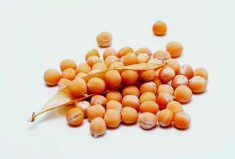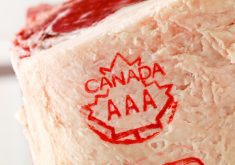Team Canada won’t be heading out overseas on a new-crop mission this year. Instead, they’ve got a new way to market wheat to their international consumers.
“We used to go to about 17 countries within a span of about six and a half weeks. That is not really possible this year,” said Dean Dias, chief executive officer of Cereals Canada.
But officials with Team Canada (which includes Cereals Canada; its technical arm, the Canadian International Grains Institute; and the Canadian Grain Commission) thought it was critical to connect with customers even during the global pandemic.
Grain buyers want a wide range of information when making their purchasing decisions, and are curious about the quality of this year’s crop, said Dias.

There have been discussions in the grain sector about creating a virtual portal for marketing for years, but it was COVID-19 that really pushed them to make it happen, he said. To that end, an organization out of Calgary has been hired to create the online hub that will host virtual webinars, videos, and one-on-one meetings between customers and sellers.
The online platform, which is expected to be active Nov. 20, will enable Team Canada to reach more markets than it has in the past.
“We are a small team and going to all the countries is always a challenge,” said Dias. “We’ve always focused on some of our top customers that consistently buy Canadian wheat.
“Years ago, we used to go out and do a seminar (at each location) and break out for meetings. With time differences and the amount of information we want to provide, it would be really challenging online.”
Read Also

Milk concentration plant officially opens in Alta.
Canadian raw-milk processing history made with start up of Dairy Innovation West milk concentration plant in Alberta
The plan is to do live sessions divided by region; one for North Africa, one for Latin America, one for Europe and the Middle East, one for Asia and one for North America.
“What we would do is have multiple streams with interpretation for each of the countries,” he said. “The challenging thing about going online is that not all technology works in all countries. We had to choose languages and interpretation at the same time.”
For example, the Asian section will be offered in Chinese, Japanese and English.
“We want to make sure our customers are our top priority and providing information to them in their own language goes a long way,” he said.
Within the same platform, customers will have the option to book follow-up meetings and also ask questions via text in real time.
Farmers have been an important part of the Team Canada missions and they’ll be an important part of the marketing platform as well.
“One of the things we’ve learned doing these missions is that consumers want to hear directly from farmers,” said Dias. “I’m not kidding when I say this — farmers doing these presentations are superstars. Customers want that interaction.”

Farmer presentations help the customers understand how their grain is grown, and where it comes from. This year, a producer will be highlighted in a video format.
“We’ll have footage during seeding, during harvest and we’ll have a producer highlight the growing season in Canada, taking them directly onto the farm and what happens during the whole season, all the way from prepping the equipment to harvest,” he said.
The featured producers will also be available for questions and to chat to the client.
Producers involved in the new-crop missions have usually been active on the boards of grain groups, with only a limited number asked to go overseas.
“This year, because it’s digital, there is an opportunity for producers to log into one of these international seminars and see the conversation going on between the Canadian team and our customers as well,” he said.
More information about how this will work will be available through the wheat commissions.
Dias said it should be a good year for wheat sales.
“This year, demand would be pretty stable to what we’ve seen last year. Perhaps a little higher,” he said. “At this point, we would be in high demand. A lot of countries are looking to get more wheat to their bins at this point.”
Canadian wheat sales are generally based on quality, and the quality has been good this year, he added.
The presentations this year will also highlight Canada’s sustainable growing practices and the development of the new grain code of practice.
















